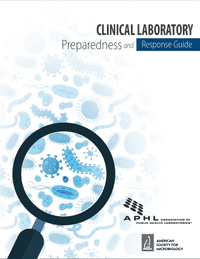Clinical Laboratory Preparedness and Response Guide
[Clinical Laboratory Guide]
This guide is intended to assist clinicians and laboratorians in recognizing potential biothreat agents and details how to follow up with state and federal partners if those tests indicate a potential biothreat agent, assuming the clinician or laboratorian is in the US. The guide is comprehensive and also covers basic biosafety, packaging and shipping, and regulations specific to LRN Sentinel Laboratories.
SUMMARY
This document provides guidance to laboratories on the responsibilities and practices that are recommended for recognizing and handling potential biothreat agents. The guide also covers basic laboratory biosafety, identifying biological agents that may be used in a bioterrorist attack, and packaging and shipping biological specimens safely. Some sections of the guide may only be relevant to laboratories within the United States. For instance, the guide covers relevant United States’ Occupational Safety and Health Administration (OHSA) regulations for working with bloodborne pathogens and rules for the United States’ Laboratory Response Network (LRN) Sentinel Level Clinical Laboratories.
The guide is co-published by the Association of Public Health Laboratories (APHL) and the American Society for Microbiology (ASM). The APHL is an American membership organization that represents the laboratories tasked with protecting the health and safety of the public by monitoring issues related to food safety, environmental safety, and infectious diseases. It also works with over 30 other countries to strengthen laboratory practices. ASM is a professional organization for microbiologists with over 30,000 members, a global health program, and an academic journal. The two organizations recommend that this guide be stored in a location where laboratory staff can readily access a copy while working. They also recommend that any laboratorian who may encounter a biological agent be well-versed in the identification, referral, packaging, and shipping procedures outlined within the guide. The guide may be useful for organizations outside of the US seeking to produce a similar guide for their own laboratories. Although, the guide is currently only available in English. There are no scheduled updates at this time.


..png)
